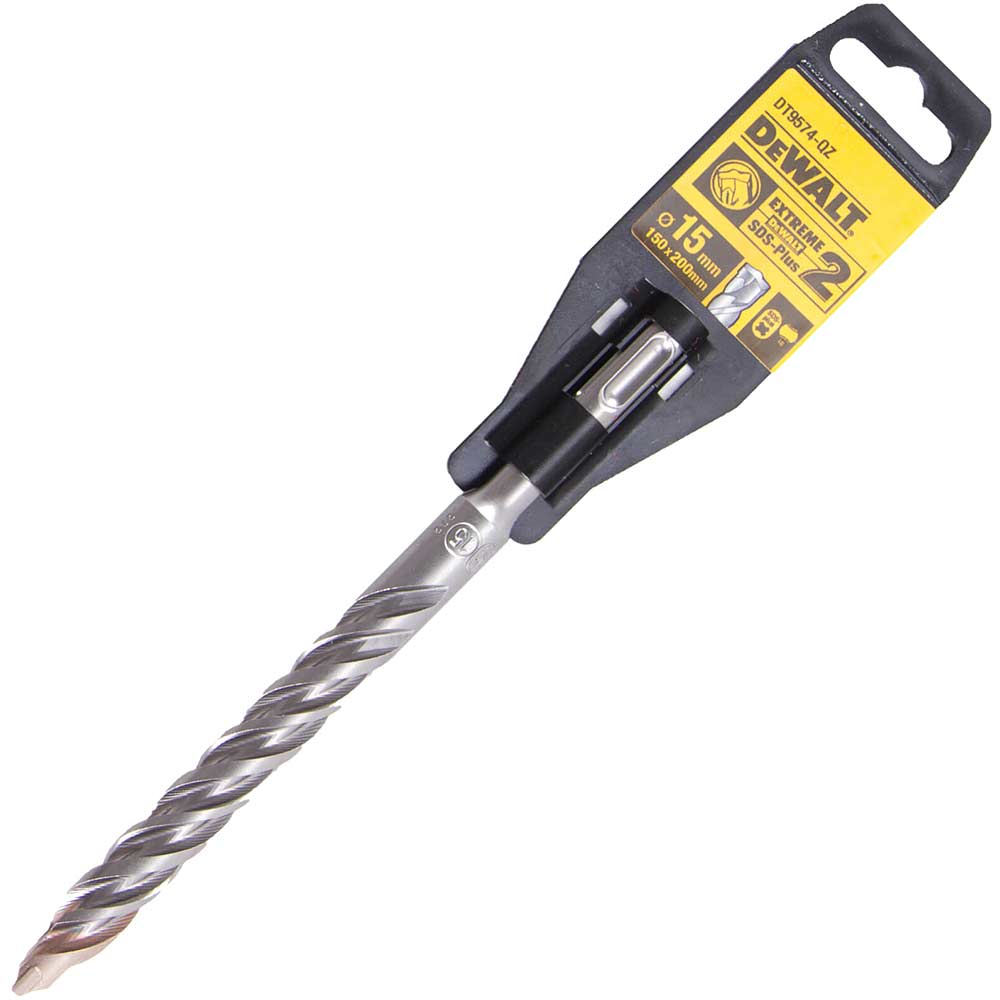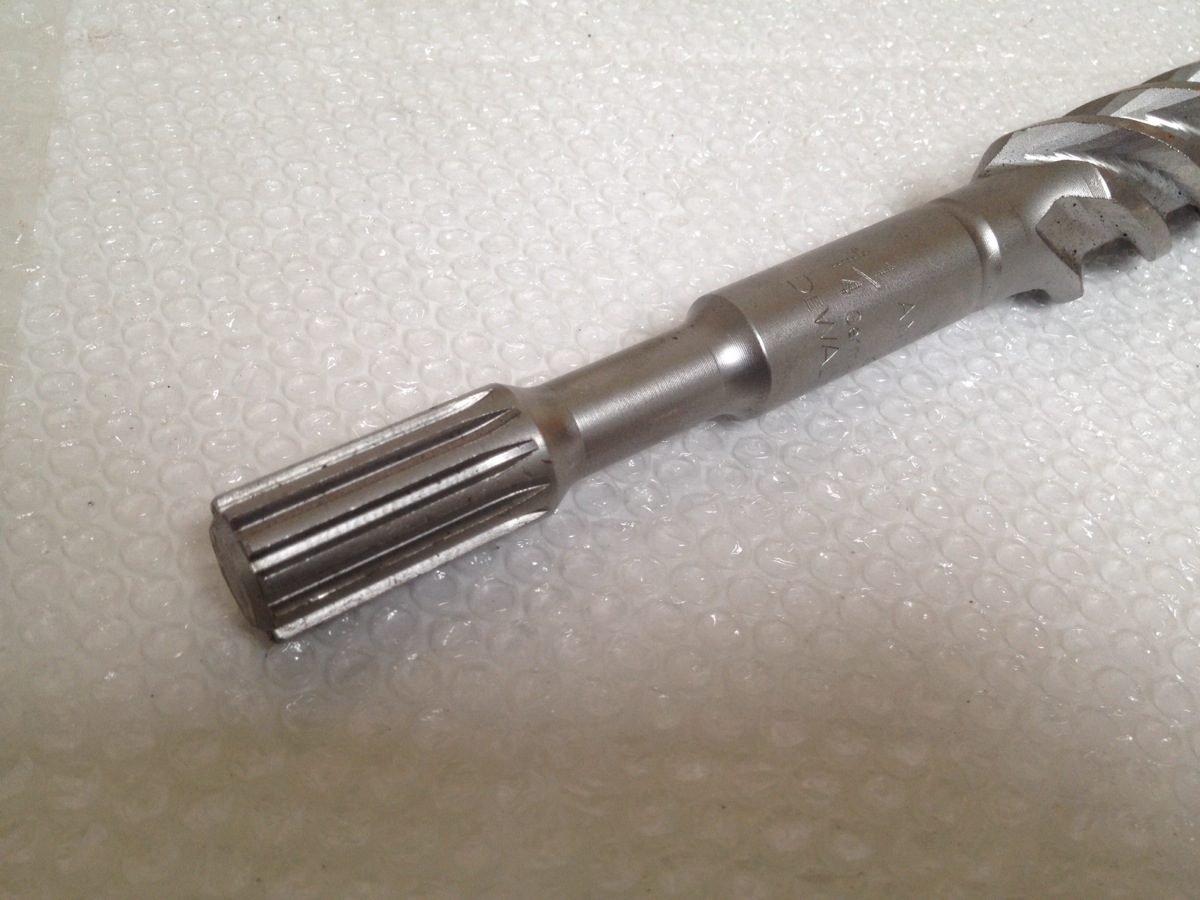


#Dewalt concrete drill bit plus#
SDS Plus vs SDS Max Bit Sizes For DrillingĪccording to Wikipedia, “The SDS bit was developed by Hilti and Bosch in 1975. Unlike a conventional hammer drill, SDS Plus and SDS Max tools have a chuck that you don’t need to tighten. One of the advantages of SDS Plus and SDS Max bits is that they securely slide right into the chuck without the need to tighten them down or re-tighten them. This means you have to tighten down the chuck onto the bit. They use conventional bits, and they have a normal chuck. If you’re a homeowner and only drill occasional, very small diameter holes into concrete you might get by with a hammer drill.

Is a Regular Hammer Drill Enough? For occasional concrete drilling, especially small diameter holes, a hammer drill like this dewalt can do the job.Īt the risk of confusing things a “bit” further, hammer drills are also used for concrete drilling. While many SDS Plus tools are available cordless, battery-juiced tools are finding their way into the beefier SDS Max lineup too. Cordless SDS Max – the Makita XRH07PTU rotary hammer. If you’re doing heavier duty work or demolition only (meaning you don’t need to drill holes), then a beefier SDS Max tool or demo hammer may make the most sense for you. If you’re a homeowner, doing lighter duty work I think a three mode SDS Plus tool is great to have on-hand. The remainder of the SDS Max tools and what are referred to as demolition hammers (or demo hammers) only have a chiseling mode. Most of the SDS Plus, and some of the SDS Max tools have drill only, hammer drilling, and chiseling modes. Many SDS Plus tools have a rod enabling you to control hole depth when drilling. Finally, chip-only tools are all about chipping away or breaking up concrete. Rotary hammer drilling mode combines the rotation with a hammering action that gives the concrete at the end of the hole repeated little Hulk smashes, while the rotation also helps extract the concrete debris. The tools with drill only modes function like you would expect a drill to in that mode, with rotation only. When you’re evaluating SDS Plus and SDS Max tools, you’ll find they tend to have either one, two or three capabilities. The three modes on this Bosch Bulldog Xtreme SDS Plus tool: drill only, rotary hammer, and chipping only. SDS Plus is lighter duty and for smaller holes when drilling, SDS Max is heavier duty and for larger holes. I’m going to get all crazy metric on you and lay down these stat’s the diameter of SDS Plus shanks are 10 millimeters, with the beefier SDS Max shanks at 18 millimeters. If you are investing in a beefy concrete drilling or chipping tool, we’d recommend something using SDS Max vs Spline – mainly because you’ll have more accessories to choose from with SDS Max.Īt the most basic level of SDS Plus vs SDS Max, SDS Plus bits are thinner and smaller than their SDS Max counterparts. They’re similar to SDS Max in terms of size, but there are more SDS Max bits and tools out there. Sometimes you’ll run across Spline tools and bits. SDS Plus also sometimes uses “SDS” (no “Plus”), however both SDS and SDS Plus can be used in the same SDS Plus tool. When it comes to concrete drilling and chipping tools, most of what you’ll see out there are SDS Plus and SDS Max. Let’s get ready to make some silica dust (to be promptly vacuumed in an OSHA-compliant fashion, of course)! SDS Plus vs SDS Max – The Basics Some common SDS Plus bits and a popular SDS Plus bit kit from Bosch In the process, we’ll also get into the tools that drive these bits, and when you might want to reach for SDS Plus vs SDS Max, and vice-versa. In this article, we’ll dive into the differences of SDS Plus vs SDS Max, two of the more common standards of concrete drilling and chipping tools. Simpler, but still with enough variations to confuse most people that don’t deal with concrete everyday. Simple, right?! Thankfully, the world of concrete drilling, chipping and demolition is a bit simpler. Remember back when there was just “USB”? Now there’s USB-A, USB-B, USB-C, USB-2, Mini-USB, Micro-USB (not to be confused with Mini-USB), and of course, USB-3.


 0 kommentar(er)
0 kommentar(er)
